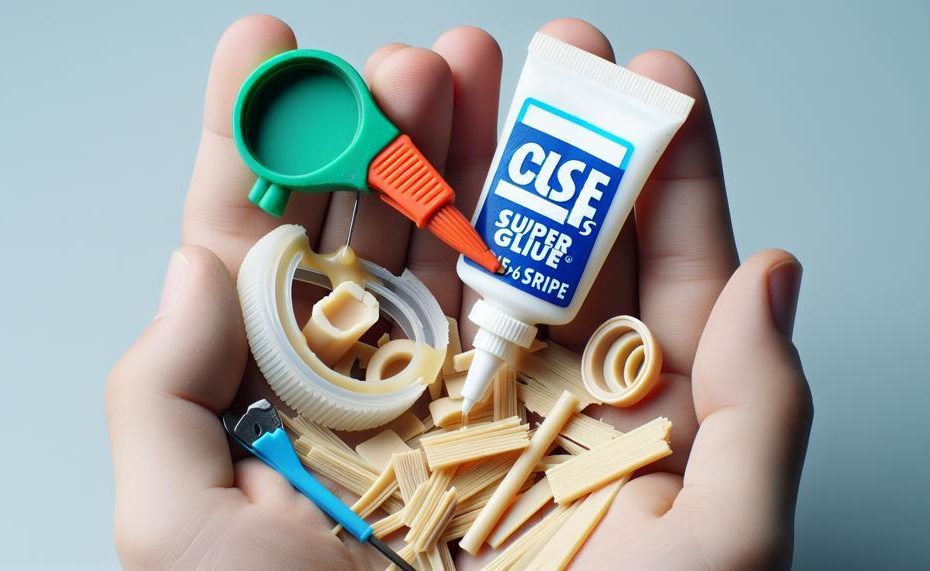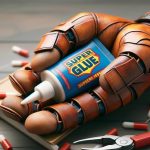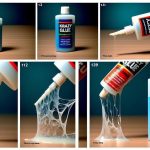Are you tired of constantly struggling with rubber items that just won’t stay put? Say goodbye to your frustrations because we have the ultimate solution for you: super glue.
This versatile adhesive has been a household and industrial staple for decades, but have you ever wondered how effective it is on rubber? In this blog post, we will delve into the world of superglue and uncover its true potential on rubber materials.
Get ready to be amazed as we unveil the power of this adhesive.
In this post, we will explore:
- The science behind super glue and its bonding mechanism with rubber
- Different types of rubber materials and their compatibility with super glue
- Pro tips for applying super glue to various rubber surfaces
- Real-life success stories of using super glue on rubber objects
- Essential safety precautions when working with super glue and rubber
So, if you’re ready to bid farewell to loose soles, broken toys, and other rubber-related woes, keep reading to discover the wonders of super glue.
Table of Contents
- 1 The Chemical Reaction between Super Glue and Rubber
- 2 Factors that Affect the Bond Strength of Super Glue on Rubber
- 3 Testing for Compatibility Before Applying Super Glue to Rubber
- 4 Removing Excess Super Glue from Rubber Surfaces
- 5 Using Solvents to Remove Super Glue from Rubber
- 6 Mechanical Removal of Bonded Super Glue from Rubber
- 7 Tips for Proper Application and Removal of Super Glue on Rubber
- 8 Common Misconceptions about Using Super Glue on Rubber
- 9 Conclusion
The Chemical Reaction between Super Glue and Rubber
The chemical reaction between super glue and rubber is a fascinating process that results in a strong bond between the two materials. This bond is created through oxidation, where long chains of molecules are formed, creating a tight connection between the surfaces. However, the presence of sulfur in rubber can interfere with this process, making it challenging for super glue to bond with rubber.
In order to achieve a successful bond between super glue and rubber, it is crucial to select the right type of rubber. Rubber with a higher surface energy is more compatible with super glue and will result in a stronger bond. Alternatively, there are specialized super glue products available on the market that are specifically designed for bonding with rubber.
To further improve the bonding strength between super glue and rubber, there are a few additional techniques that can be utilized. Roughening the surface of the rubber can increase the surface area and provide more contact points for the super glue to bond to.
Additionally, using a primer can also enhance the bonding process by creating a stronger connection between the two materials.
Factors that Affect the Bond Strength of Super Glue on Rubber
The bond strength of super glue on rubber is largely influenced by four key factors: surface preparation, type of rubber, environmental conditions, and thickness of the adhesive layer. These factors can greatly impact the effectiveness of the adhesive and its ability to fully penetrate and bond with the rubber surface, ultimately resulting in a strong and durable bond.
Proper surface preparation is crucial in ensuring optimal bonding between super glue and rubber. This involves thoroughly cleaning the surface to remove any contaminants or oils that may interfere with the adhesive’s ability to bond. Failure to properly prepare the surface can significantly weaken the bond.
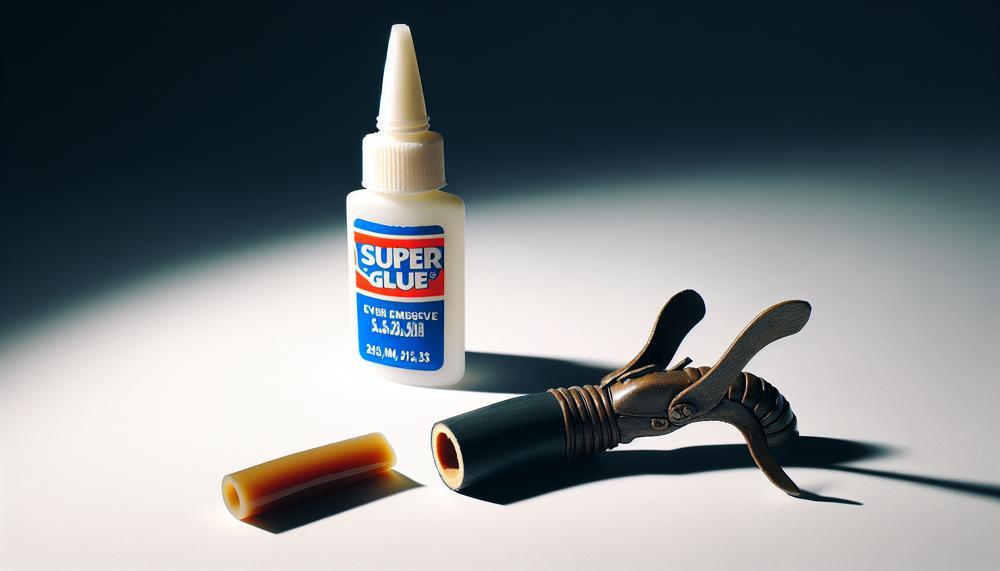
In addition to surface preparation, it is important to understand the type of rubber being bonded. Different types of rubber may require specific treatments or adhesives for optimal bonding. For instance, some rubbers may have a low surface energy, making it more difficult for adhesives to bond effectively.
Environmental conditions, such as temperature and humidity, also play a significant role in the bonding process. These factors can affect the curing process of the adhesive and if not controlled properly, can weaken the bond. For example, high humidity can cause the adhesive to take longer to dry, potentially creating air pockets or gaps that can weaken the bond.
Lastly, the thickness of the adhesive layer also impacts the bond strength. Using too much adhesive can create excess and potentially create air pockets or gaps between surfaces, weakening the bond. On the other hand, using too little adhesive may not provide enough coverage for a strong bond.
Testing for Compatibility Before Applying Super Glue to Rubber
Before using super glue on rubber, it’s crucial to test its compatibility to ensure a strong bond. Identifying the type of rubber, performing a patch test, assessing bonding strength, and taking into account external factors like temperature and humidity can all help with this.
By following these steps, you can ensure the effectiveness of your super glue on the rubber material, creating a durable and robust bond.
A table summarizing the steps for testing compatibility before applying super glue to rubber is provided below.
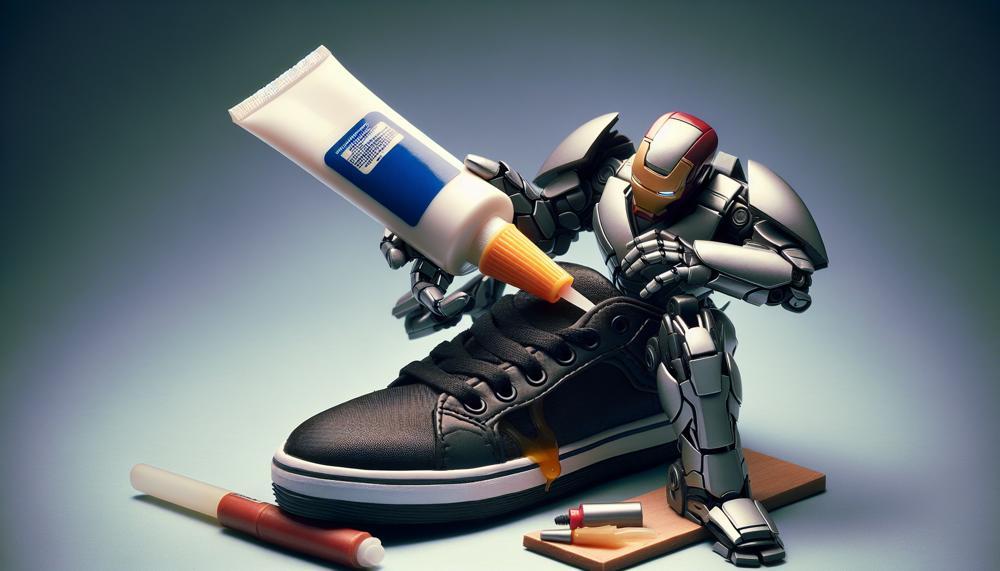
| Step | Description |
| 1 | Determine the type of rubber being used (natural or synthetic). |
| 2 | Conduct a patch test by applying a small amount of super glue to a small area of the rubber and letting it dry for 24 hours. |
| 3 | Check the bonding strength by placing a drop of super glue on a small piece of rubber and pressing it firmly onto another surface. After 24 hours, attempt to separate the two surfaces. |
| 4 | Take into account external factors such as temperature and humidity and how they may impact the bonding strength of super glue on rubber. |
By following these steps, you can assess the compatibility of super glue with the rubber material before application.
Removing Excess Super Glue from Rubber Surfaces
Removing excess super glue from rubber surfaces can be a challenging task, but with the right methods and precautions, you can easily achieve success without causing any damage.
There are various techniques available for this purpose, including using solvents, soaking in warm soapy water, employing mechanical techniques, utilizing commercial adhesive removers, taking preventative measures, performing patch tests, and handling the process with care.
Using Solvents:
For effective super glue removal, solvents such as acetone or isopropyl alcohol can be utilized. These powerful substances can be applied to the affected area with a soft cloth or cotton ball and gently rubbed onto the surface.
The solvents work by breaking down the bonds in the super glue, making it easier to remove.
Soaking in Warm Soapy Water:
Another proven method is to soak the glued area in warm soapy water for at least 30 minutes.
This helps to soften the super glue, making it easier to scrub or peel off. After soaking, use a soft-bristled brush or sponge to gently remove the softened glue.
Employing Mechanical Techniques:
Mechanical techniques such as scraping with a plastic scraper or credit card, sanding with fine-grit sandpaper or an emery board, or peeling off softened glue after soaking in warm soapy water can also be effective.
These methods may require some manual effort but can successfully remove excess super glue without damaging the rubber surface.
Using Commercial Adhesive Removers:
There are also specially formulated commercial adhesive removers available that are designed to break down tough adhesives like super glue.
It is crucial to follow the manufacturer’s instructions when using these products to ensure they are safe for use on rubber surfaces.
Taking Preventative Measures:
The best way to deal with excess super glue on rubber surfaces is to prevent spills and mishaps in the first place.
This includes proper preparation and planning before starting a project, protecting rubber surfaces with plastic wrap or wax paper, and using precision applicators instead of applying super glue directly from the tube.
Performing a Patch Test:
Before using any solvents or adhesive removers, it is essential to perform a patch test on a small, inconspicuous area of the rubber to ensure the product will not cause any damage or discoloration.
Handling with Caution:
Lastly, it is crucial to handle the removal process with caution and patience to avoid scratching or damaging the delicate rubber material. Take your time and be gentle when removing excess super glue from rubber surfaces.
By following these effective methods and tips, you can safely and easily remove excess super glue from rubber surfaces without causing any harm.
Using Solvents to Remove Super Glue from Rubber
Super glue, also known as cyanoacrylate adhesive, is a strong and fast-drying adhesive that is commonly used for household repairs. But sometimes, accidents happen and super glue can end up on rubber surfaces, leaving a sticky and unsightly mess. Luckily, there are solvents that can effectively remove super glue from rubber without causing any damage.
Using solvents to remove super glue from rubber surfaces is a simple and effective method. Acetone, rubbing alcohol, and petroleum jelly are all common solvents that can be used for this purpose. Before using acetone, it is important to check if the rubber surface is resistant to it by testing a small amount on an inconspicuous area.
If not, rubbing alcohol or petroleum jelly can be used instead.
To use a solvent, it is important to take safety precautions and work in a well-ventilated area while wearing gloves. Apply the solvent to the affected area and let it sit for a few minutes to break down the bond between the glue and the rubber.
Then, gently scrape off the softened glue with a scraper or plastic spoon. Repeat this process until all of the glue is removed.
Regularly cleaning rubber surfaces and wearing gloves when handling super glue can prevent these accidents from occurring in the first place.
Mechanical Removal of Bonded Super Glue from Rubber
The mechanical removal of bonded super glue from rubber surfaces is a highly effective approach. It involves physically eliminating the adhesive without the use of chemicals or solvents. This technique is perfect for individuals with chemical sensitivities or those who prefer a more natural approach to removing super glue.
One common method of mechanical removal is scraping. This involves delicately scraping the edges of the glue with a plastic scraper or credit card, gradually working towards the center. Patience and precision are crucial in order to avoid damaging the rubber surface.
For larger areas, sanding can also be used as a mechanical method. Gently sanding the glue with fine-grit sandpaper or an emery board in circular motions can help break down the adhesive and make it easier to remove.
Peeling is another effective method for smaller areas of super glue on rubber surfaces. Soaking the affected area in warm soapy water and then carefully peeling off the softened glue with fingers or tweezers can do the trick.
Applying heat is also an effective mechanical method for loosening super glue. By using a hairdryer or heat gun, the adhesive can be warmed up, making it more pliable and easier to scrape or peel off.
However, it is important to take precautions when utilizing these methods. Wear gloves and avoid excessive pressure that could potentially damage the rubber surface.
Tips for Proper Application and Removal of Super Glue on Rubber
Properly applying and removing super glue on rubber can sometimes be a challenging task due to the unique surface of rubber and the strong bonding process of super glue.
However, with the right techniques and products, you can achieve a strong and lasting bond without causing any damage or creating a messy situation.
Here are some tips for properly applying and removing super glue on rubber:
| Tips for Proper Application | Tips for Proper Removal |
| Choose a specific type of super glue that is designed to bond with rubber surfaces. | Soak a cotton ball or swab in acetone and gently apply it to the affected area. |
| If possible, use sandpaper to roughen the rubber surface or use a rubber bonding primer. | Work slowly and carefully, repeating the process multiple times until all the residue has dissolved. |
| Apply a thin layer of super glue evenly onto the rubber surface. | Use rubbing alcohol or acetone to dissolve any remaining residue. |
| Firmly press the two surfaces together and hold for at least 30 seconds to ensure proper bonding. | Rinse with soapy water or wipe with a damp cloth to remove any excess solvent. |
| Allow the bond to dry for at least an hour before handling or applying pressure. | If necessary, repeat the process until all of the super glue has been removed. |
By following these steps, you can ensure that your super glue bonds successfully with the rubber surface without causing any damage.
In case of any accidental spills or excess glue on other surfaces, here are some tips for removing super glue:
- For skin: Soak the affected area in warm, soapy water and gently peel or roll off the adhesive.
- For fabric: Apply acetone to the stain and let it sit for a few minutes before washing with warm, soapy water.
- For plastic: Use Goo Gone or rubbing alcohol to dissolve the glue.
- For metal: Soak in hot, soapy water and scrub off with a non-scratch sponge or cloth.
In summary, while super glue may not be the most reliable option for bonding with rubber, by choosing the right product and following proper application and removal techniques, you can achieve a successful bond without causing any damage.
Common Misconceptions about Using Super Glue on Rubber
Contrary to popular belief, using super glue on rubber surfaces does not cause any physical damage. However, it may not provide a strong bond due to the non-porous nature of rubber and the presence of substances that can hinder the bonding process.
This is a common misconception about using super glue on rubber, often resulting in disappointment and frustration when the bond does not hold as expected.
Rubber is a unique material that requires special consideration when using super glue. Its smooth, non-porous surface makes it difficult for the adhesive to penetrate and create a strong bond.
Additionally, rubber contains substances such as oils and plasticizers that can interfere with the bonding process.
These substances act as a barrier between the glue and the rubber, preventing a strong bond from forming.
Conclusion
In conclusion, super glue has been a trusted adhesive for both household and industrial use for many years. However, there has been some confusion surrounding its effectiveness on rubber surfaces. But fear not; with a deeper understanding of its bonding mechanism and proper application techniques, super glue can be an effective solution for various rubber items.
It is crucial to choose the right type of rubber and properly prepare the surface before applying super glue. Environmental conditions and the thickness of the adhesive layer also play a significant role in the strength of the bond. To ensure success, it is recommended to test for compatibility and use solvents or mechanical techniques for removal without causing damage.
Despite potential challenges, using super glue on rubber can open up endless possibilities when armed with the right knowledge and techniques.

